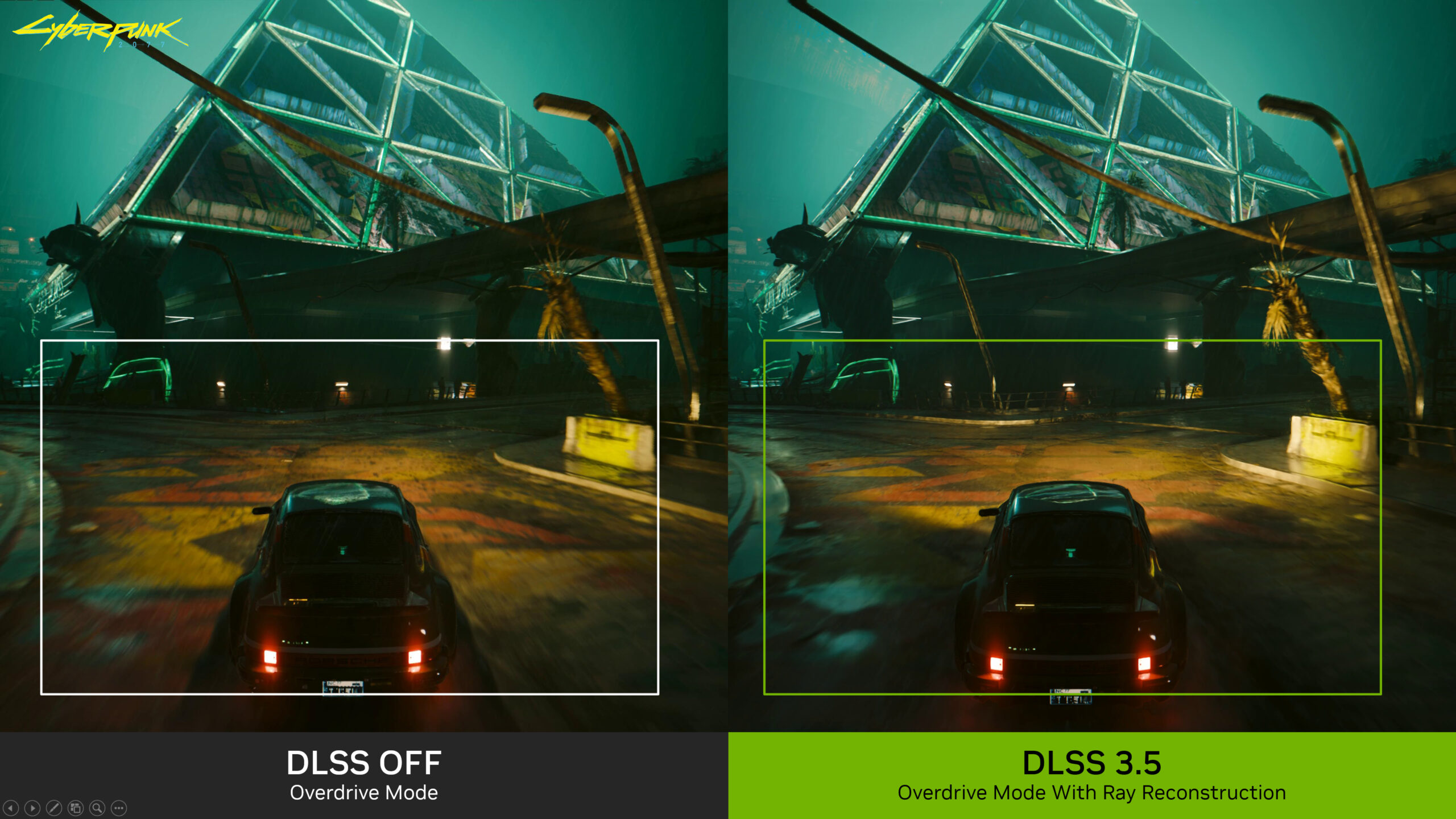
The world of PC Gaming and PC hardware is one that is full of technical jargon. If you are new to the space, or are looking to expand your knowledge, than you have come to the right place. In this article we answer the question, “What is DLSS 3.5?”. Read on to learn more
What is DLSS?
A revolutionary breakthrough in AI powered graphics that manages to boost performance while maintaining image quality and responsiveness in games. In a nutshell, DLSS is a rendering technique works by using deep learning, a type of AI, to boost framerates by rendering frames at a lower resolution and then upscaling those so that they look as sharp as they would if you were playing at your monitor’s native resolution. For example, let’s say you wanted to play a game that supports DLSS at 4K, but you aren’t quite seeing the framerate you would like playing at native 4K. So you go into the game settings and enable DLSS. Though the power of DLSS you could render those frames at a lower resolution, say 1080p, then the DLSS magic kicks in and upscales those frames at 4K, resulting in faster frame rates and sharper image quality than 1080p.
When NVIDIA introduced the RTX 40 Series Graphics cards, they introduced DLSS 3.0. Powered by the new fourth-gen Tensor Cores and Optical Flow accelerator present on 40 series graphics cards, DLSS 3.0 uses AI to create additional frames and improve image quality, aptly “Frame Generation”.
Frame generation is a real, noticeable leap for DLSS. It boosts performance using AI to generate more frames, while maintaining responsiveness with NVIDIA Reflex. DLSS analyzes sequential frames and motion data from the new Optical Flow Accelerator in RTX 40 Series GPUs to create additional high quality frames. All that technical jargon is really saying is that – your games will look better and run at even higher frame rates with that better image quality; some pretty neat stuff.
DLSS 3.5 furthers DLSS’s usefulness with the introduction of Ray Reconstruction. Unlike frame generation technology which is limited to RTX 40 Series graphics cards, all RTX GPUs can take advantage of of Ray Reconstruction. So how does it work? Ray Reconstruction enhances image quality for all GeForce RTX GPUs by once again using AI to generate additional pixels for intensive ray-traced scenes in games. DLSS then replaces hand-tuned denoisers with an NVIDIA super-computer trained AI network that generates higher quality pixels between sampled rays. In other words, Ray Tracing, which is notoriously taxing and can drop framerates, not only looks better, but doesn’t tank your framerate. This means your can enjoy the beauty that ray tracing adds to games without worrying about it slowing down your game.
If you are looking to learn more about DLSS or which Games have DLSS support, head over to NVIDIA GeForce’s website to learn more.
Of course if you are interested in getting a brand new gaming PC to experience DLSS for your self, head on over to our website to get started customizing your gaming desktop.